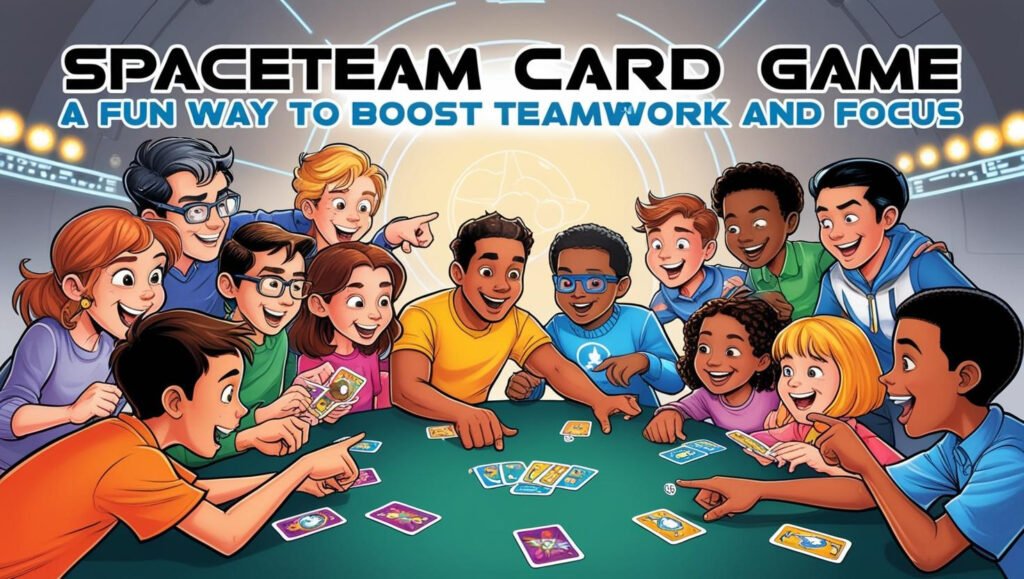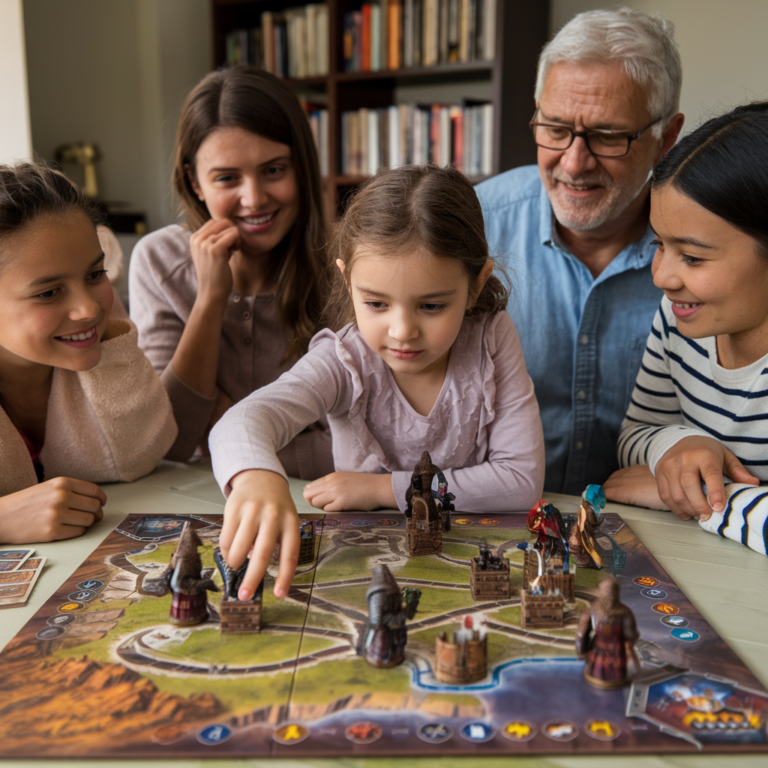Spaceteam Card Game: A Fun Way to Boost Teamwork and Focus

Have you ever played a game that made everyone laugh so hard they almost fell out of their chairs? That’s what happened when my family tried the Spaceteam card game ! It’s not just fun—it’s also a great way to practice teamwork and communication. Whether you’re playing at home or in a classroom, this game is perfect for breaking the ice and helping people work together. Let me tell you why Spaceteam is such a fantastic tool for boosting teamwork and focus.
Why It Fits in Classrooms
Promotes Collaboration and Communication
In Spaceteam, players work as a team to keep their spaceship flying safely through space. Each player gets cards with instructions like “Activate the Thrusters” or “Turn Up the Gravity Dial.” The catch? You have to shout these commands out loud because someone else might need to do them on their turn.
One time, when we played with friends, things got so chaotic that we were all yelling over each other. My friend accidentally turned off the wrong switch, and we nearly crashed our imaginary ship! But instead of getting mad, we couldn’t stop laughing. It was total chaos—but in the best way possible.
The Spaceteam Card Game is a standout choice for boosting teamwork and focus through its fast-paced, cooperative gameplay. To understand why it’s so effective, this detailed Spaceteam review dives into its engaging mechanics and collaborative nature. For families on a budget, you can explore a variety of affordable options in this list of the best cheap cooperative board games . If you’re comparing Spaceteam to other family-friendly games like Bandido or Sushi Go , this comparison guide provides valuable insights. And if you enjoy quick, strategic games, don’t miss this roundup of 10 fun games similar to Sushi Go for even more exciting ways to build skills.
Breaks Monotony with Interactive Learning
Classrooms can sometimes feel boring, but Spaceteam brings energy into the room. Kids get to move around, talk loudly, and laugh while still learning important skills like listening and working together.
Lesson Integration Ideas
Use Spaceteam to Teach Vocabulary or Problem-Solving
Teachers can tweak the game to fit their lessons. For example:
- Add vocabulary words to the cards so students practice new terms.
- Include math problems or riddles that require solving before completing actions.
When I played a version like this with my daughter and her friends, we added random trivia questions. It made them think harder but still kept things fun!
Incorporate STEM Concepts Like Systems Thinking
Spaceteam naturally teaches kids about systems thinking because everything in the game is connected. If one person misses their task, the whole team fails. Teachers can explain how this mirrors real-life situations, like building machines or working on group projects.
Here’s a list of STEM-related concepts you can teach with Spaceteam:
- Cause and effect (e.g., missing a command leads to failure).
- Problem-solving under pressure.
- Team roles and responsibilities.
Managing Gameplay in Large Groups
Divide Students Into Smaller Teams
Big classes might seem tricky, but dividing students into small groups works wonders. Each team gets its own set of cards and plays independently.
The Spaceteam Card Game is not only a fun way to boost teamwork and focus but also a powerful tool for family bonding and skill development. To explore how it strengthens family connections, check out this family bonding guide , which highlights its ability to bring everyone together through laughter and collaboration. For shy kids, the game serves as an excellent icebreaker, helping them feel more comfortable in social settings—learn more in this resource on Spaceteam as an icebreaker . It’s also a great option for children with ADHD, as it encourages engagement and focus, as explained in this guide to Spaceteam and ADHD . Additionally, the game fosters communication skills, making it a valuable teaching tool—discover how in this communication-focused article . Planning a game night? Get tips for hosting an unforgettable session in this epic game night guide . If you’re new to the game, this simplified rules guide is perfect for beginners, and parents can find step-by-step strategies for teaching kids in this helpful parent’s guide .
Rotate Roles Frequently to Ensure Fairness
To keep things fair, teachers can switch roles often. One student might start as the captain, then rotate to being an engineer or navigator. This ensures everyone gets a chance to try different responsibilities.
Here’s a simple table showing how to organize teams:
| Group Size | Number of Teams | Suggested Time Per Round |
|---|---|---|
| 20 | 4 | 10 minutes |
| 30 | 5 | 8 minutes |
Teacher Feedback
Many teachers love using Spaceteam in class. One educator shared, “My students were so engaged—they didn’t even realize they were practicing teamwork!” Another said, “It helped quieter kids come out of their shells because everyone had to participate.”
Even during a recent visit to a friend’s classroom, I saw firsthand how much the kids enjoyed it. They cheered every time they completed a round successfully.
Conclusion: Turning Classroom Chaos Into Productive Teamwork
The Spaceteam card game proves that chaos doesn’t always mean confusion—it can lead to amazing teamwork and focus. By bringing this game into classrooms, teachers can help students build important life skills while having a blast.
So if you’re a teacher looking for a creative way to boost collaboration and communication, give Spaceteam a shot. Who knows? You might find your classroom buzzing with excitement and laughter!
Pro Tip: Keep a timer handy to manage rounds, and remind students that listening is just as important as talking.






